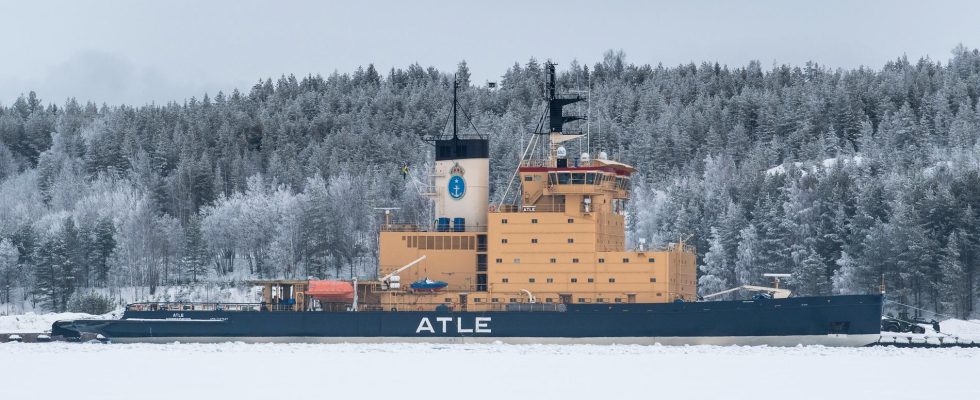Updated 02.47 | Published 01.34
unsaveSave
expand-left
full screen The Maritime Administration’s state icebreaker Atle. Archive image. Photo: Pontus Lundahl/TT
The winter cold has meant that Sweden had to call in extra icebreaker help – and if the situation becomes more pressing, it may be difficult to bring in even more resources.
– Then you have to wait a little longer to get assistance, says Isabella Grönfeldt at the Swedish Maritime Administration.
The Swedish Maritime Administration’s five state icebreakers and two work vessels with icebreaking capabilities assist in various parts of the country. In addition, an additional, private ice-breaking resource is hired.
– Winters are often mild and the ice does not spread that far, but this year it took off early and the ice has been far down in the Bothnian Sea, says Isabella Grönfeldt, operator at the Swedish Maritime Administration’s icebreaker management.
During the January cold, even more help was needed, and at most three different ice-breaking resources from private actors were called in at the same time.
According to the forecast, the ice situation will become more difficult in the northern Bothnian Sea in the future, while it is expected to ease further south.
It is often in February or March that there is maximum ice extent, as the water has had time to get cold by then. If the situation were to become more difficult than it was earlier this winter, it could be difficult to get access to enough resources.
– We have a hard time bringing in more if it really took off. We don’t have any more agreements at the moment, says Grönfeldt.
– If there are needs that we cannot really fulfill, then you have to wait a little longer.
FACT The Swedish Maritime Administration’s icebreaker
The Swedish Maritime Administration has five of its own icebreakers: Ale, Atle, Frej, Oden and Ymer. If necessary, external resources such as tugboats are hired.
On average, 3,500 ships transit Sweden under icebreaker command each year.
Close to ten million tons of goods are shipped to and from the ports in the Gulf of Bothnia per winter, which corresponds to approximately one million trucks.
For some years now, Sweden and Finland have had a very close collaboration on icebreaking, which can mean that it is sometimes a Finnish icebreaker that assists the traffic to a Swedish port and vice versa.
Source: Maritime Administration
Read more
